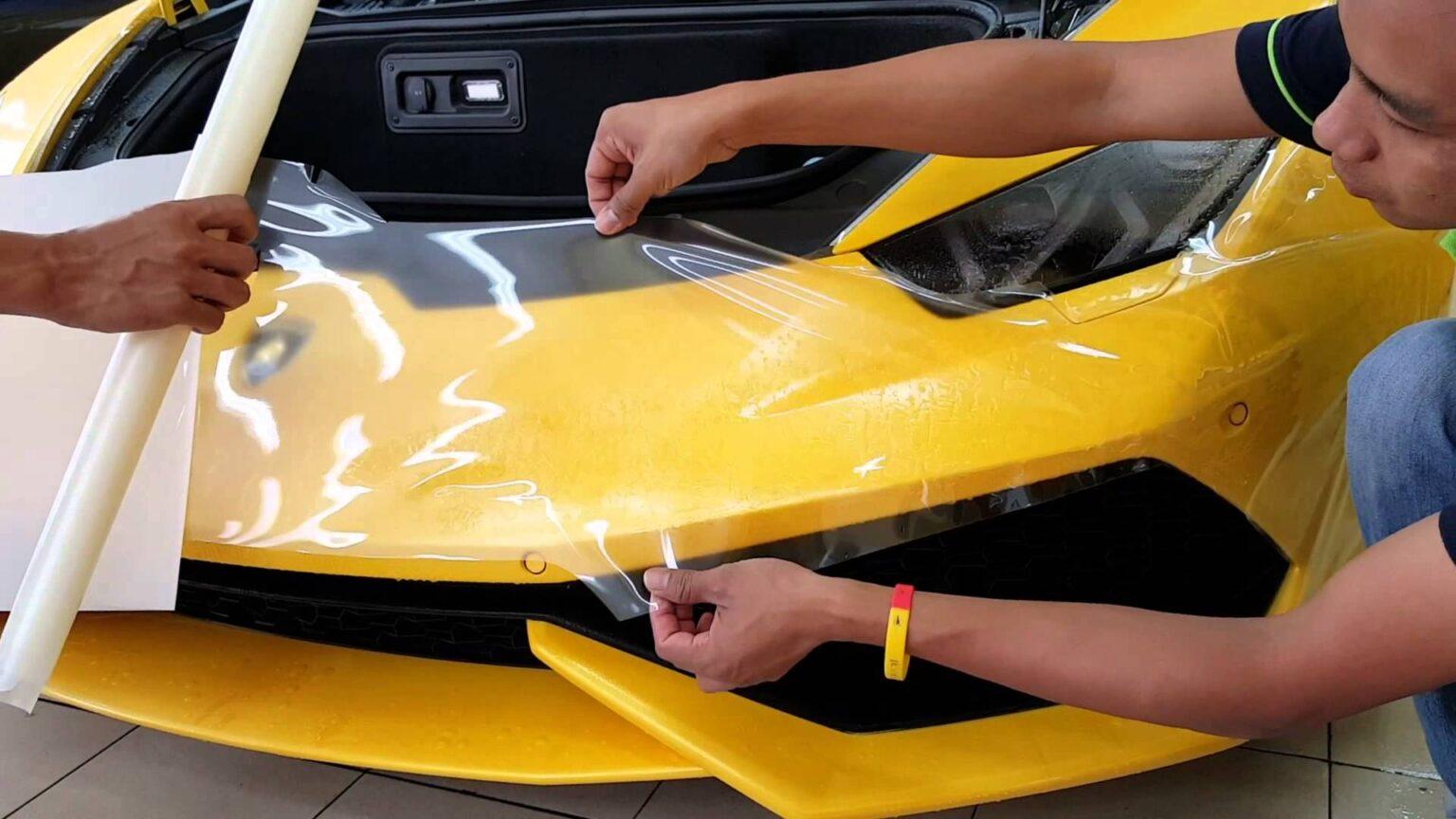Paint protection film (PPF) is a clear, durable urethane layer applied to a vehicle’s painted surfaces to guard against damage from stone chips, scratches, and environmental factors. It effectively preserves the car’s appearance by providing a strong barrier against everyday wear and tear without altering its look.
This film also offers protection from UV exposure, road tar, bug stains, and automotive fluids, all common threats to a vehicle’s finish. Its self-healing properties on some premium options help maintain a smooth, glossy surface even after minor abrasions.
PPF is available from several trusted brands, each providing various levels of thickness, clarity, and resistance. Professional installation ensures a seamless fit, making paint protection film a practical choice for anyone looking to maintain the resale value and overall condition of their vehicle.
What Is Paint Protection Film for Cars?
Paint Protection Film for Cars is a transparent layer applied to a vehicle's painted surfaces to prevent damage. It shields against scratches, chips, and environmental factors while maintaining the car's original finish. The following details explain PPF’s variations, function, and typical uses on cars.
Types of Paint Protection Film
PPF primarily comes as urethane-based films, known for flexibility and durability. There are several types, including:
- Glossy film: Enhances the vehicle's shine and maintains a clear, smooth surface.
- Matte film: Preserves a matte finish for cars with non-glossy paint while providing protection.
- Self-healing film: Contains a top layer that repairs minor surface scratches with heat or sunlight exposure.
Thickness usually ranges from 6 to 12 mils, affecting protection level and flexibility. Thicker films absorb impacts better but may be less flexible around curves. Some PPF products include UV inhibitors to prevent paint fading.
How Paint Protection Film Works
PPF acts as a sacrificial barrier between the road and the car’s paint. Its urethane composition absorbs and disperses impacts from stones, road debris, and minor abrasions.
The film’s elasticity allows it to stretch around complex curves without cracking. Many films have a hydrophobic coating that repels water and contaminants, easing cleaning and reducing staining.
Self-healing properties come from an elastomeric top coat that can flow back into place after small scratches. The film is clear and thin, aiming to be nearly invisible so the vehicle’s color and gloss remain unchanged.
Common Applications on Vehicles
PPF is applied to high-impact areas such as:
- Front bumpers: Most exposed to road debris.
- Hood and fenders: Vulnerable to stone chips during driving.
- Side mirrors and door edges: Prone to scratches and dings.
- Headlights: Protection against cracks and discoloration.
Some owners cover entire vehicles for full-body protection. Application requires professional tools and expertise to ensure bubble-free installation and longevity.
By targeting critical spots, PPF helps maintain appearance and resale value over time.
Benefits and Key Considerations
Paint protection film provides a durable layer that guards the vehicle’s exterior while enhancing its appearance over time. It requires thoughtful maintenance and proper installation to maximize its effectiveness and lifespan.
Protection Against Environmental Damage
Paint protection film (PPF) shields the car from physical threats such as rock chips, scratches, and debris. By creating a barrier, it absorbs impacts that could otherwise damage the paint.
PPF also defends against environmental factors like UV rays, acid rain, and bird droppings, which cause fading and corrosion. This protection helps maintain the vehicle’s color and prevents long-term deterioration.
Some advanced films possess self-healing properties, allowing minor scratches to disappear with heat exposure. Additionally, hydrophobic characteristics repel water, oils, and dirt, reducing the buildup of contaminants on the surface.
Maintaining Vehicle Aesthetics
PPF preserves the vehicle’s glossy finish by preventing dulling and discoloration from daily wear. Its clarity ensures that the original paint color shows through without distortion.
This layer also simplifies cleaning since dirt and grime do not adhere strongly to it. Owners often experience easier maintenance compared to unprotected surfaces.
Moreover, vehicles with PPF tend to retain higher resale value. The intact paint beneath the film signals better care and less cosmetic damage to potential buyers.
Installation and Maintenance Tips
Proper installation is crucial. PPF must be applied by professionals to avoid bubbles, wrinkles, or misalignment that compromise both protection and appearance.
Maintaining the film involves gentle cleaning using mild soaps and soft cloths. Abrasive materials or harsh chemicals can degrade the film's surface or adhesive.
Periodic inspections for wear or lifting edges should be conducted. While durable, PPF typically lasts between 5 to 10 years depending on use and exposure.
Using compatible sealants can extend the film’s lifespan and maintain its hydrophobic qualities, but choosing the right products is essential to avoid damage.

